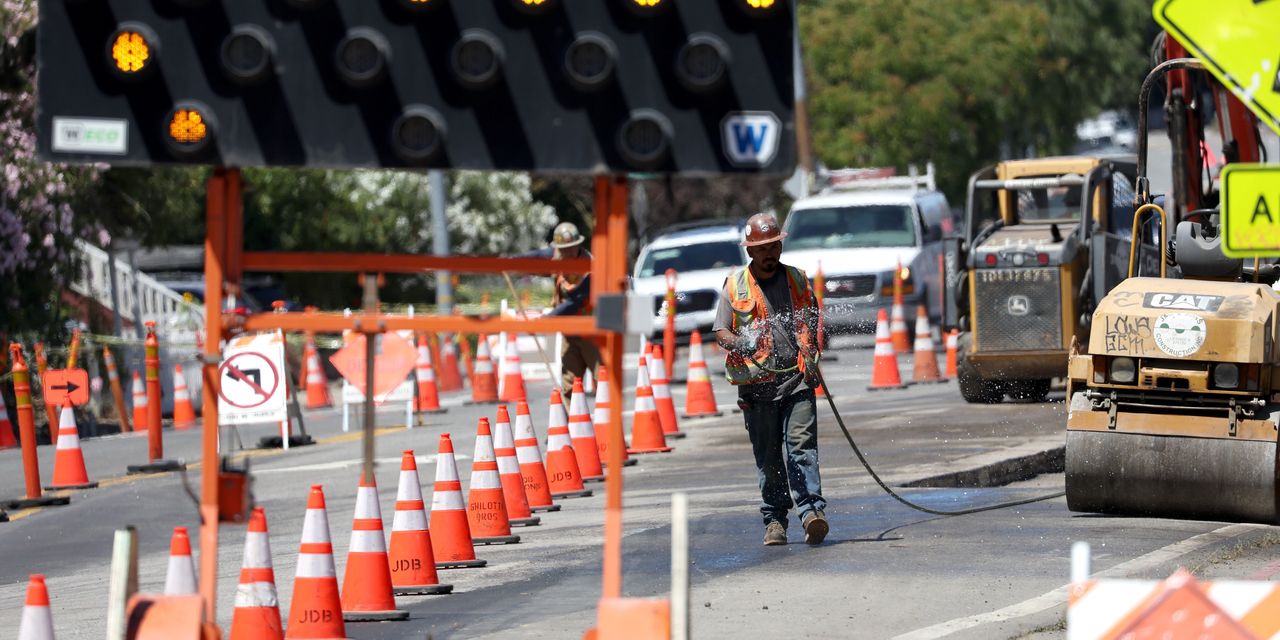The number of new jobs created in October could fall to a nearly two-year low, but it still won’t be slow enough for Federal Reserve Chairman Jerome Powell.
“The labor market remains extremely tight,” he said at the start of his regular press conference. Then a few minutes later he said, “The labor market continues to be out of balance.”
If that wasn’t enough, Powell later declared that “the labor market is just very, very, very strong, very strong.”
And to top it off, he added: “The broader picture is of an overheated labor market where demand substantially exceeds supply.”
The point wasn’t lost on Wall Street. The chairman clearly signaled he wants to see hiring slow dramatically and unemployment rise before the Fed backs off on the most aggressive series of rate hikes in decades.
The October employment report, due Friday morning, is unlikely to provide much comfort for Powell. The U.S. employment report is forecast to show an increase of 205,000 new jobs and a 3.5% unemployment rate.
Such an increase would be the smallest since the end of 2021, but from a historical standpoint, it will still be a strong employment report. The U.S. added an average of 200,000 jobs a month from 2015 to 2019, for instance.
What’s so bad about a robust jobs market and the lowest unemployment rate in more than 50 years? The Fed is worried a labor shortage will push up wages too fast and make it harder to rein in high inflation.
Average hourly wages are already rising at a 5% yearly pace to mark the fastest increase since the early 1980s.
To be sure, the Fed isn’t blaming the desire of workers for higher pay for the spike in inflation. Higher pay is helping Americans to cope with higher prices.
The cost of living has climbed 8.2% over the past year vs. less than 2% annually before the pandemic.
Yet if workers come to expect bigger and bigger raises, Fed officials worry, a wage-price spiral could develop and embed high inflation in the economy. That would make price pressures harder to throttle back to levels seen before the coronavirus pandemic.
What would help ease Powell’s worries is a sharp decline in job openings and new hiring, an increase unemployment and more people joining the labor force.
The economy doesn’t need to add many new jobs each month, for instance, to keep unemployment low. Estimates range from 100,000 a month to considerably less.
The number of job openings per unemployed worker — a statistic Powell follows closely — is still extremely high. There were 1.9 openings per each unemployed person in September, well above the 1.2 ratio before the pandemic.
The lowest unemployment rate since 1969, for its part, underscores just how tight the labor market is. The Fed predicts it will rise to 4.6% by next year as its interest rate rises slow the economy, but many economists think it could rise to 5.5% or higher.
“The here-and-now requires the Fed to create higher unemployment,” said chief economist Steve Blitz of TS Lombard.
Powell doesn’t expect to get any help from a large increase in the number of people entering the jobs market, a scenario that could alleviate the labor shortage and ease the upward pressure on wages.
“We’re getting, really, nothing in labor supply now,” Powell said.
That leaves higher interest rates to do the dirty work.
The Fed on Wednesday raised a key interest rate for the sixth time this year, pushing it up to range of 3.75% to 4% from near zero just seven months ago. By next year the rate could rise to 5% or so.
The aim is to slow inflation by reducing consumer spending and business demand for labor.
But until the proof is in the pudding, analysts say, the Fed won’t lift its foot off the monetary brakes.
“The Fed will need to see the jobless rate push up to the 4.5% to 5% area, at a minimum, before” considering a pause in rate hikes, said chief economist Steven Ricchiuto of Mizuho Securities.
Fed officials are not rooting for wages to fall or people to get laid off, of course. Yet Powell has repeatedly stressed that persistently high inflation is even more ruinous to the long-term health of the labor market.
“Without price stability, the economy does not work for anyone,” Powell said. “In particular, without price stability we will not achieve a sustained period of strong labor market conditions that benefit all.”



